Patagonia’s Endless Summer
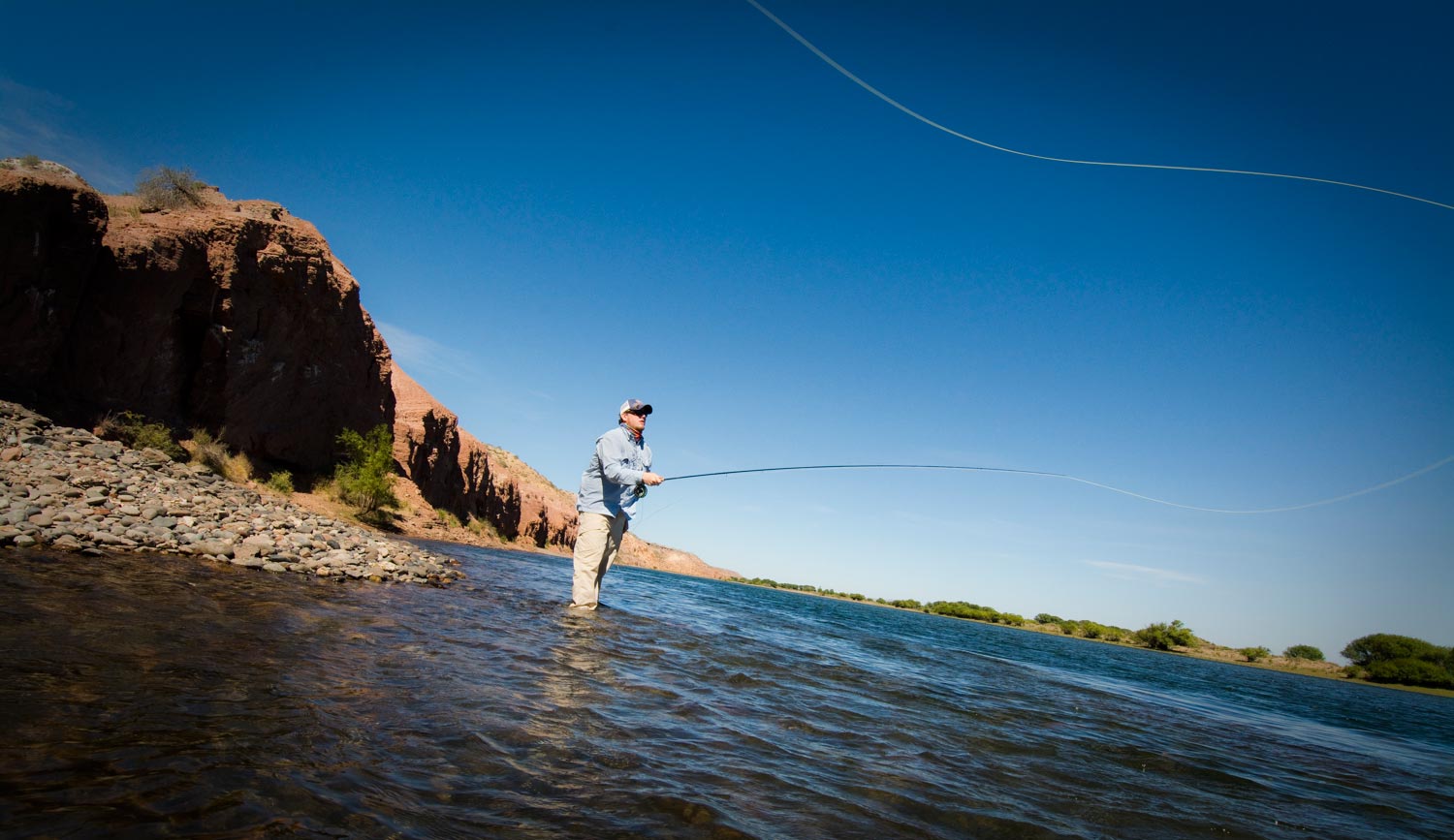
It turns out there is a cure for winter.
The sky is blue. The sun is warm. Red stone cliffs rise above deep green water. Rolling hills covered in sage brush, or what looks like sage brush, roll uninterrupted as far as the eye can see. Twenty-inch brown trout rise out every green pocket to eat big bushy dry flies. It’s January and at home pipes are bursting in my basement.
I could swear I was in Montana. It looks so much like Montana. I didn’t expect that. Just like Montana summer, until you spot a group of llamas resting by the river or a snow covered volcano or a condor sailing like a pterodactyl overhead or your guide says something like, “give it to me please, the fly.”
So much about Patagonia is familiar and so much strange. The language, the customs and the wildlife may seem strange, but rivers are rivers and trout, trout. My fly knows what to do here and it does it time and time again.
We float beautiful wild rivers and never see another boat. We fish long days. The sun is up late here, less than five-hundred miles from Antarctica. The water is so clear you can count the pebbles at the bottom of the deepest runs. The air is warm and sweet and even the fish seem to be carried away in the innocence of summer. I drink wine and eat dolce de leche as the crawlspace at home fills with water.
At night we gather around a fire and watch a goat brown on a spit. We drink too much and sleep under the southern cross. I hear Crosby Stills and Nash singing “Southern Cross” in my head all week. The guides tell stories in Spanish long after I have drifted off. They are full of life and love of this land and these waters. It’s easy to imagine that it’s always summer here. That the pipes never freeze.
Patagonia with its red stag and giant birds, its wine and its chocolate,
Read More »Stretch Thy Fly Line
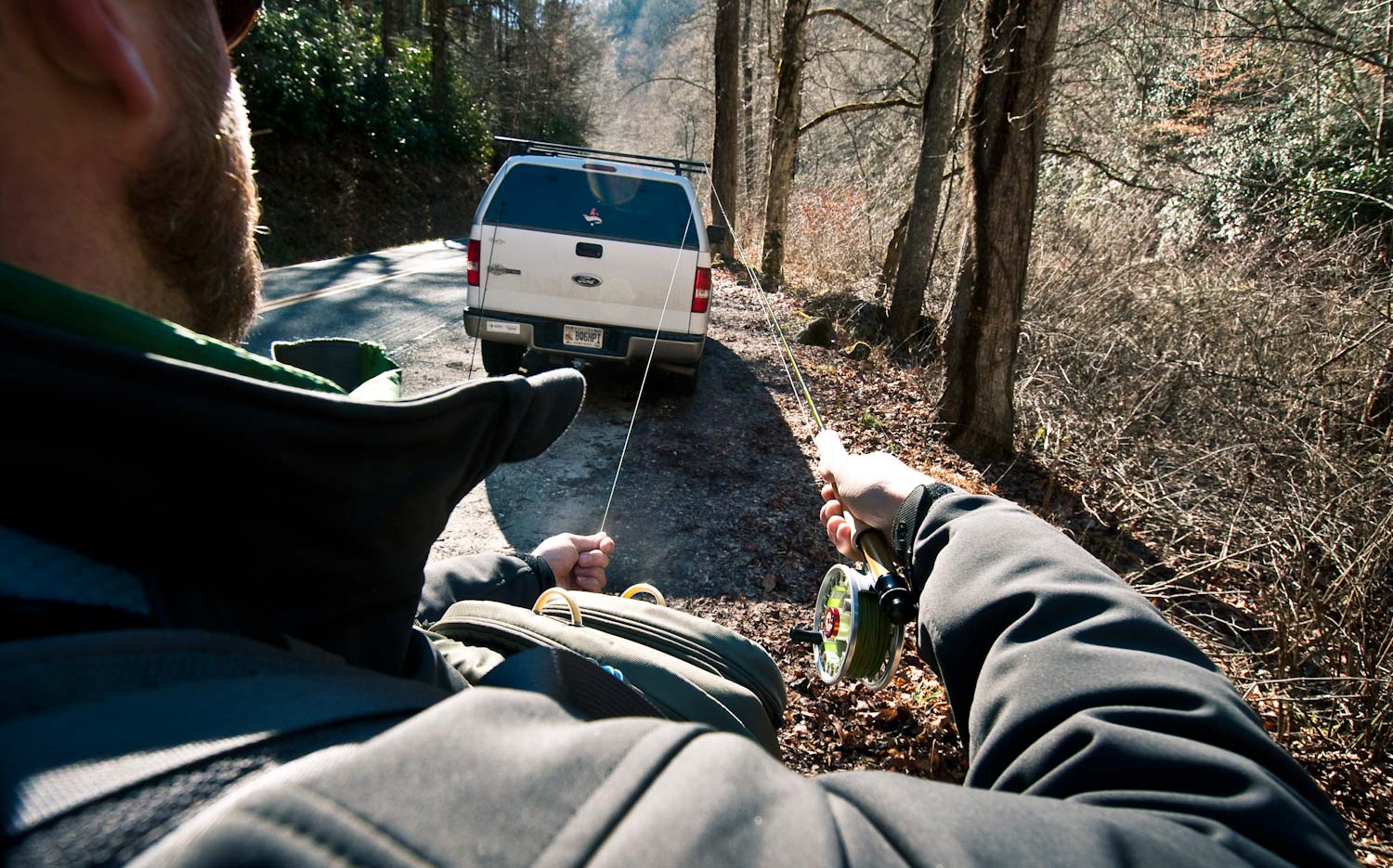
Are you looking for more a little more distance in your fly cast? Is your fly line not shooting through your guides as easy as it should? Is it lacking that fresh from the box high floating buoyancy? Are you spending more time untangling your fly line than fishing? If your answer to any of the above questions is yes, you should think about taking a couple minutes before hitting the water to stretch your fly line out.
Read More »The Kill

By Justin Pickett
The rubber basket of my net is stressed as it is stretched, enveloping what many anglers might consider the “catch of a lifetime.”
He is wild and full of energy. His hooked jaw chomping at the air, almost as if he’d bite the hell out of my hand if I just gave him the chance. Peering at me with those eyes, those discerning, brown-yellow eyes, I feel as though he is silently cursing me for ripping him from his underwater existence. His back is a dark brown-green. His flank is covered with random, irregular, black spots that are overlaid on a buttery-yellow canvas. There is a touch of bright red speckled amongst his sides, tail, and on the adipose. His belly is void of spots, accentuating the yellow that fades to a small strip of a grey on the very underside of his body. The stout nose is scarred, telegraphing a powerful jaw filled with tiny, tippet-trashing razors. His large, dominant tail no doubt commands the water. Two feet of sheer power and grace, he is, without a doubt, the prince of piscivores.
I am fortunate to have convinced such a sought-after trophy to attack my fly. The size #4 streamer (tied to resemble a juvenile brown trout) was too much for this meat-eating maniac to pass up. Like a starved cat that’s just found a fat mouse, he struck like lightning. Violently clinching my fly in his jaws and immediately turning back to his lair within the submerged wood. That split second before I set the hook into his jaw, his likely expectations were that of an easy meal. What he, nor I, didn’t realize at the time was that it would be his last.
I was fishing with a good friend of mine. We were enjoying a great day of fishing. We had already landed several nice fish throughout the morning and this was just gonna put things over the top for us. After the wily brown was netted, we took a few seconds to set things aside and prepare for a quick “keep ‘em wet” photo before we would recover and release him back to his watery residence. Everything seemed to be playing out just right.
Once we had all of our gear on the bank, I reached in to remove the fly. It was buried in the roof of his mouth. Not the easiest place to remove a hook, but the hook’s barb was pinched down so I was sure that would make it much easier for both the fish and me. He was lying on his side, cradled by the net’s basket. Calm, still half in the water while I positioned my hemostats to remove the fly. Watching carefully, I clamped down on the bend of the hook. At this moment I had the thought, “You don’t want to slip and injure his gills” run through my head. That would certainly cause harm, if not fatally injuring this fish. With a good hold on the metal, I began to back the hook out from his mouth. It was at this moment, things went awry. My hand was steady. The hemostats didn’t slip. As if to protest my efforts to remove the fly from his jaws, he lurched his head upwards and shook his head. I immediately cringed. I knew that, in that instant, these moments of fun and joy were ruined. Our initial feelings of pride and excitement turned to a gut-wrenching, silent emptiness. As if the Grim Reaper himself had appeared and the crimson red trail suspended within the current was his calling card.
I felt sick. Death was certainly imminent.
Even so, we did what we could.
Read More »Tarpon On The Four Weight
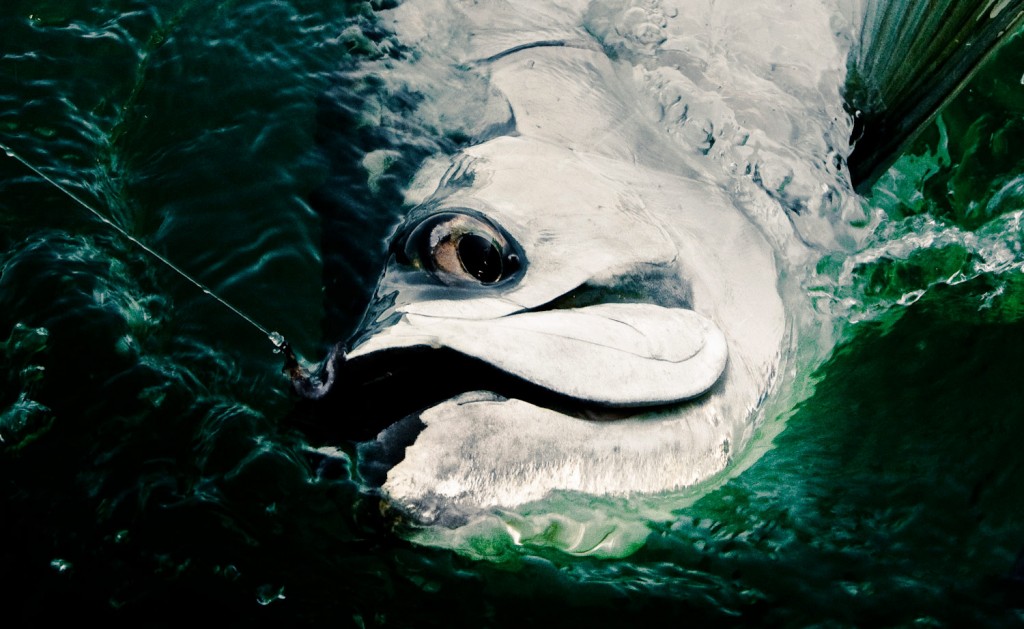
LET ME BE CLEAR ON THIS…I AM NOT A DUMB ASS. WELL, AT LEAST NOT A BIG ENOUGH DUMB ASS TO TRY AND CATCH A TARPON ON A FOUR WEIGHT.
But I did buy a new four weight reel the other day and a ten weight line. So I sat down to line up the two reels, which is my cat’s favorite thing in the world, and something occurred to me. I rig my four weight for tarpon. What I mean by that is that I use the same system for attaching my fly line to the backing that I learned when I started saltwater fly fishing.
Before I started fishing salt I attached my line to the backing with a nail knot, like I learned to as a kid. Now I spend a lot more time whipping a loop on the back of my fly line with tying thread and superglue. Then I spend even more time tying a double Bimini twist in my backing and connecting loop to loop. But why?
Well, it’s clearly a stronger connection but do I need that on a four weight trout rod? It sure doesn’t hurt when you find yourself connected to a ten pound trout on your four weight. You will be seeing that backing, I promise. Still, it’s clearly overkill. It comes back through your guides smoother and that’s nice, but still not a big deal. Here’s my reasoning, and this is why I use this method on all my reels.
Read More »Watch That Hook Set!
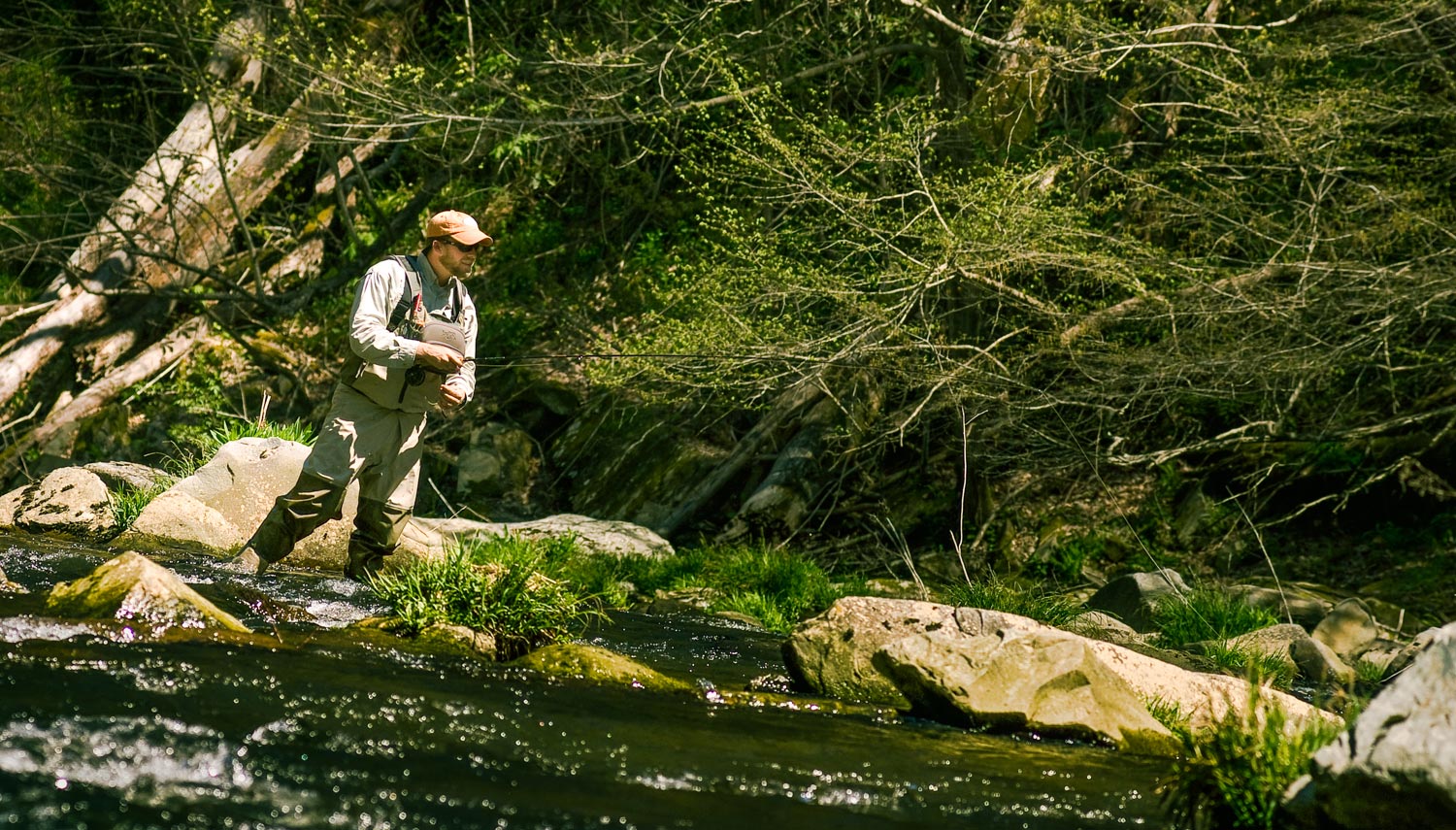
By Justin Pickett
You’ve just sent your flies along their path to greatness.
Your dry/dropper lays out sweetly onto the surface of the water, right where you wanted it. As you watch your fly doddle along the bumps and bubbles, it happens… The broad nose of a hungry trout emerges from the underworld and nonchalantly gulps down your dry. Everything goes just as planned as you wait for the trout’s nose to dip before setting the hook, and just as that snout tips… you set your hook right into a bush or a tree, possibly costing you a proper hookup on this trout. Maybe you smacked your buddy in the face. Or worse, what if your rod got hung in an overhead limb while the fish was hooked up and subsequently broke your rod tip? I’m speaking from experience on every single one of these examples!
Preventing any of these scenarios is as easy as just taking a look around before making your cast. Take note of your casting obstacles, many of them are likely to become obstacles during your hookset as well. The obvious killers are the overhead limbs and bushes, but don’t overlook
Read More »Patagonia Dream Stream: Video
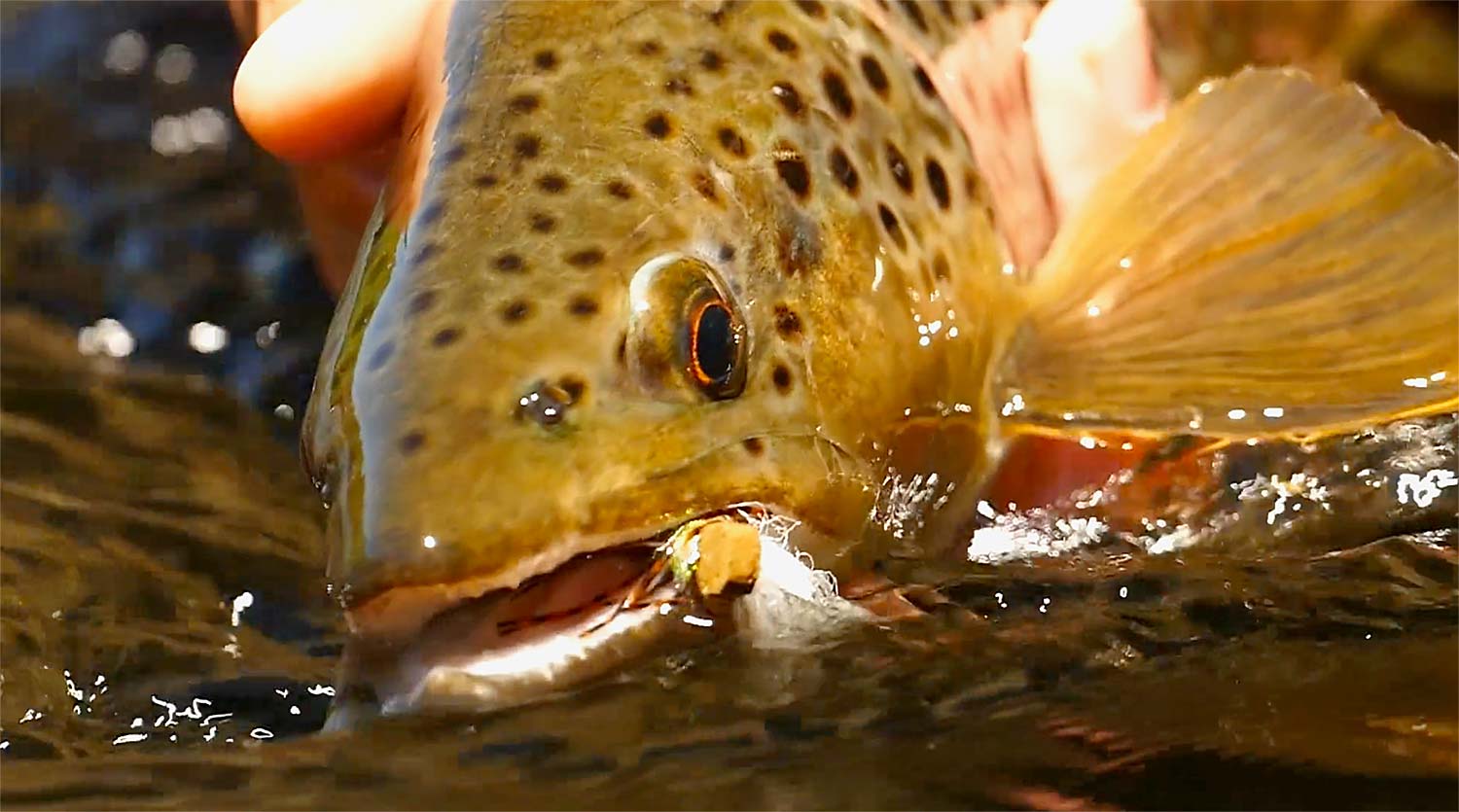
It’s time for a little walk-and-wade trout fishing in Argentine Patagonia.
My buddies at Andes Drifters have been killing it with their video content recently. Not to mention their fishing! This video is a great example. Beautiful footage and heart stopping action from one of the prettiest places on earth.
The river in this video is one I will be scouting in November, and I couldn’t be more excited. It’s just one of the cool, untapped resources Andes Drifters has at hand. It’s hard to believe that rivers like this go un-fished, anywhere in the world. If you have never experienced fly fishing in Argentina, put it on your to do list.
If you’s like to see it for yourself, we still have spots open for our Feb 2019 trip, where we fish for trout in Patagonia and golden dorado on the Upper Parana. It is absolutely a trip like no other. Shoot me an email at hookups@ginkandgasoline.com if you’re interested.
Read More »Restore an Old Bamboo Fly Rod #6: Video Series
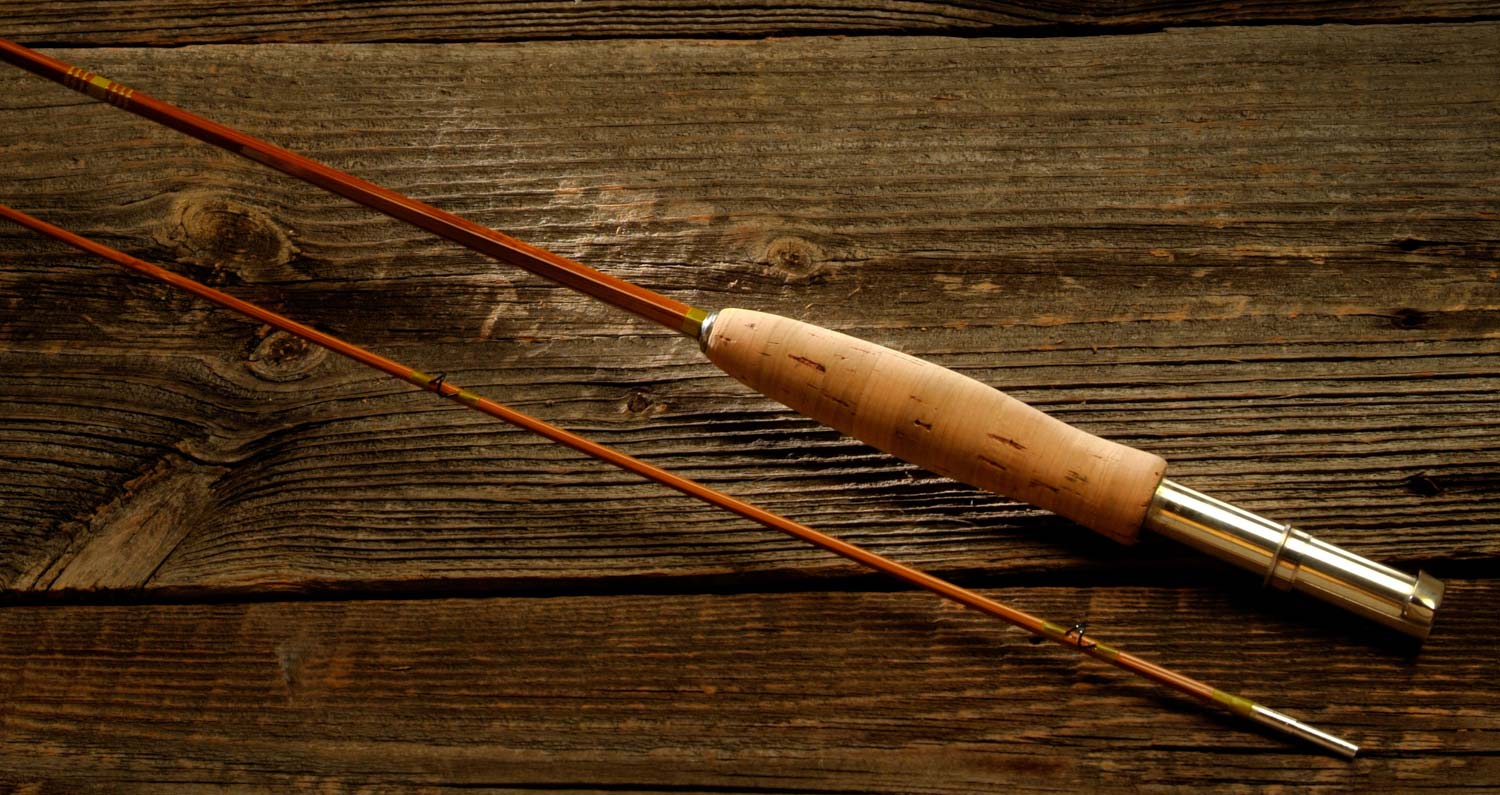
Matt Draft is back with the 6th and final episode of our bamboo fly rod restoration series.
In this video, Matt shows you how to repair a bamboo fly rod that has delaminated. You’ll learn how to repair the separated sections and reinforce the repair with invisible wraps.
Thanks Matt! for this great series.
RESTORE AN OLD BAMBOO FLY ROD #5
Read More »DRIFTING

By Marcus Saunders
That gentle morning light seems to push back all those fears that hound our minds at 3am. Glancing sideways out of the ute window, I see vague outlines race by as the human world slowly comes into focus; the radio is silent, and only the occasional rattle of the trailer reminds me that the boat is in tow. Early mornings belong to no one. Fishermen seem to love them more than most, the enveloping quiet, indifference from most wildlife and only the occasional raspy bird call. The put-in at Cressy is quiet, not another soul as you watch the sun creeping closer until finally that ribbon of fire burns across the landscape. The boat slides gently from the cradle, the teflon doing its job as quickly the boat is tugging on the rope. Sometimes it feels a little strange, like a dog pulling on the leash, then final checks and a gentle push, and your other life is left behind. The first dip of the oar as you correct then find your line, followed by the inevitable arse shifting as the rope seat softens and you push to find your sacred position. You swing the bow into the current, one more quick check, and finally it feels right.
Despite the graft, it just feels right. Everything seems to be as it should be, and a little on-the-spot research confirms that these boats were designed for hard labour. I’ve never considered myself an oarsman, but when I sit in a boat that has been shaped by my own hands a different kind of connection seems to exist. It may sound a little fauxmantic, yet it is possibly like any other love in that it helps make us whole. The slow start is comforting, low volume on the chatter as eyes search, those extra few minutes in the seat settle you quickly as mental adjustments are made and reading the water takes on its true meaning, searching casts arc out toward the bank as perception and reality clash. Thankfully, rhythm takes hold as cast after cast seems to be hitting the zone, the first slashy take drags us back as the mad scramble ensues, all that initial organisation goes to shit as the net gets dragged out from under what appears to be a floating fishing store and takeaway food shop. Gently you ease back on the oars as the struggle quickly fades and the net is dipped beneath a pretty little hen with spots that makes you take a second look. It feels good to be on the board early and, after easing her gently back, some quick reorganising shuffles the positions and it’s my turn to cast.
The day rolls with the pace of the river. Continual mends are thrown as you attempt to use the current to your advantage, still no hatch yet enough fish sitting just off the edge that the nymph dropper can still bring some activity. The air temperature has climbed enough that we can now strip down to waders and a tee, we need no reminders of how cold and long winter is, and any chance to lighten up is taken. Along with the warmth come the hatches. All of a sudden the back eddies are filling with lilting mayflies, they lift and fall under the now patchy sky, leaders are lightened and size 16 black spinners are tied on and ginked. We float along until
Read More »Everything You Wanted To Know About Flyfishing Leaders But Were Afraid To Ask
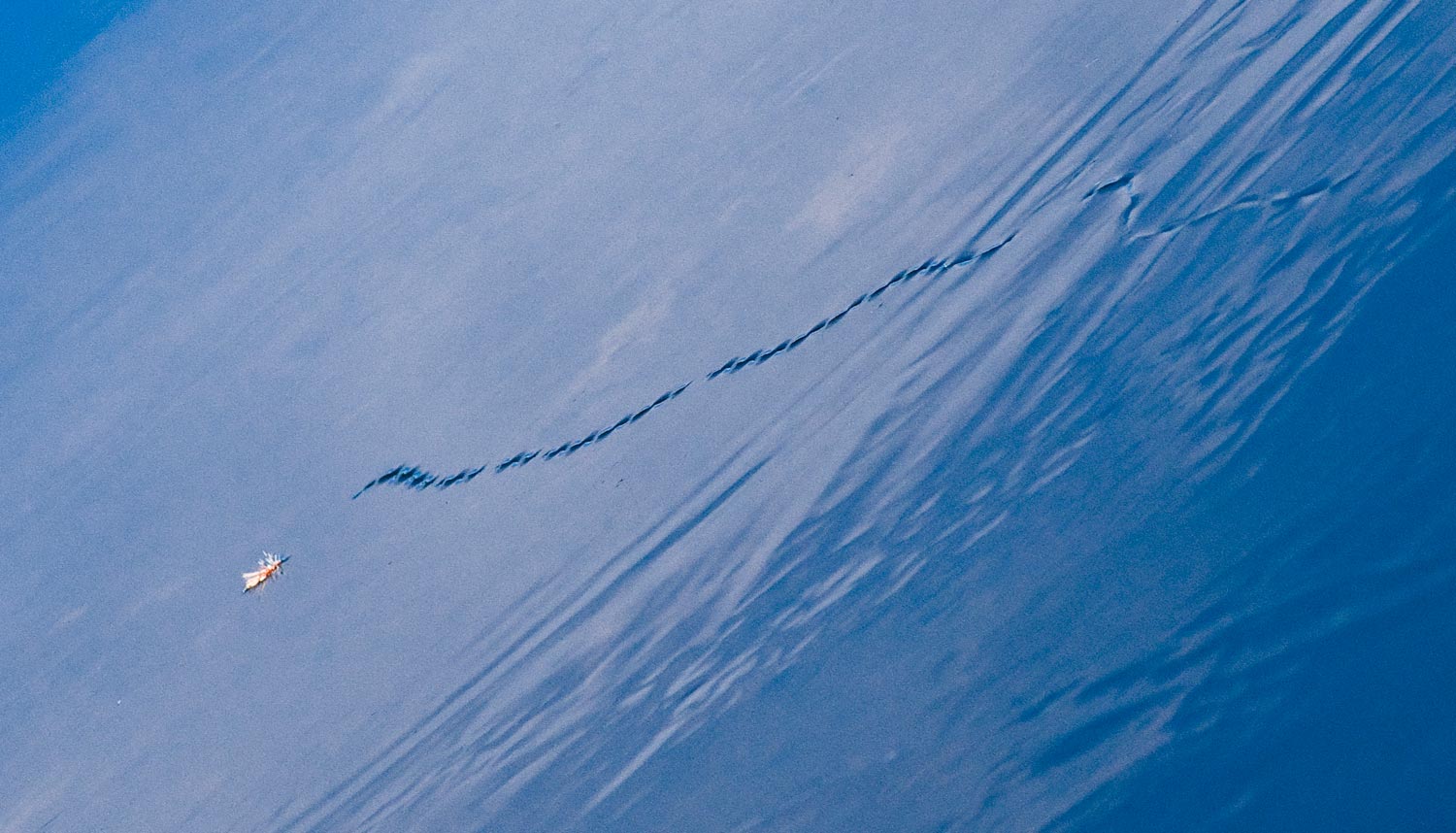
By Kevin Howell
When I began fly fishing, quality leaders were very hard to find.
The best leaders were hand tied by the Dan Baily Company in Livingston, Montana or the Orvis Company. The problem is that the tying process involved wetting the knots which, when stored over a period of time, made the knots weak and anglers would use a new leader only to have it break at the knot. Today there are countless options for anglers to choose from — not only do anglers have to choose a length and a taper design, but leaders are available utilizing Monofilament, Fluorocarbon, Braided and Furled technology.
The leader is responsible for transferring the energy from the fly line to the fly resulting in fly turnover and how it lands on the water. Leaders consist of three sections — the butt section, the midsection and tippet. The tippet is generally the last 18-24” of the leader where it connects to the fly. The midsection is the next two feet, and butt section is generally 4-5 feet and considerably stiffer. The leader should start about the same diameter as your fly line and then taper down gradually and continually until it reaches the tippet which will be a 18-24” section of the same diameter.
Of the four major types of leaders on the market, the Monofilament leader is by far the most common, with Fluorocarbon claiming second followed by braided and then furled. Today’s pre-drawn mono leaders are leaps and bounds ahead of previous mono leaders. They are strong, well designed with quality tapers, and are even starting to specialize. You will find leaders meant just for nymph fishing, leaders for dry fly fishing and everything in between.
The only downside to the mono leader is that when it gets abraded or a wind knot, it is going to break every time resulting in lost rigs or lost fish. Fluorocarbon leaders are available in the same tapers as monofilament and also very abrasion-resistant, but come at a much higher price– 2-3 times more expensive than mono. Fluorocarbon leaders are also denser than water, so they tend to sink slowly. If you are trying to fish dry flies or watch your leader for strikes, this becomes quite difficult with a leader that is slowly sinking.
Braided leaders offer excellent turnover and are almost indestructible; you simply replace the tippet when needed. However, if you are fishing over-spooky or pressured fish, they will spook the fish every time. Water sprays out of the braided leader on the forward cast and it slaps the water when landing. Braided leaders are also heavy and struggle to float especially after being fished a little. They pick up water scum and dirt, causing them to sink more than they float.
Furled leaders do not spray water as badly as a braided leader do but do spray some water on the forward cast. They also tend to sink as soon as they are fished a little bit and absorb dirt and water. Since furled leaders are not commercially produced you will have to find someone to make them for you or invest in the jigs and material to produce them yourself.
After twenty years in the guiding and outfitting business, I have found a quality monofilament leader with a fluorocarbon tippet to be the best all-around leader.
The Redfish Wiggler
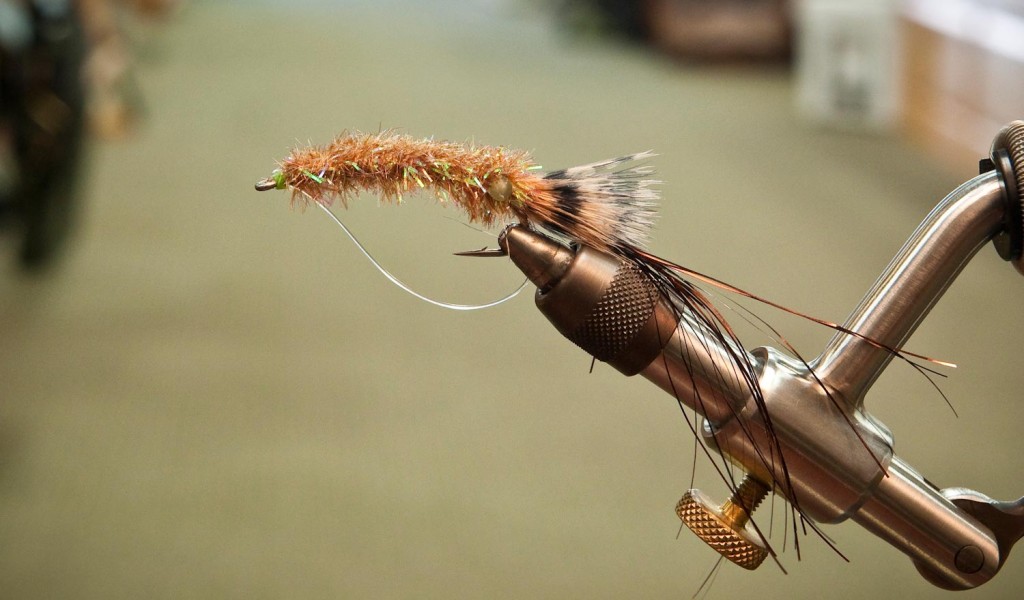
MY BUDDY PAUL PUCKETT IS BEST KNOWN FOR HIS BEAUTIFUL PAINTINGS OF FISH AND HIS FUNNY RENDERINGS OF CELEBRITY’S HOLDING FISH.
What you may not know about Paul is that he’s a redfish junky. So much so that he recently moved to Charleston SOuth Carolina to be closer to the fish he loves.
I visited The Fish Hawk the other day and Paul took the time to share one of his favorite redfish flies. If you’re headed to redfish country tie a few of these babies up. You won’t be sorry.
CHECK OUT THE VIDEO!
Read More »